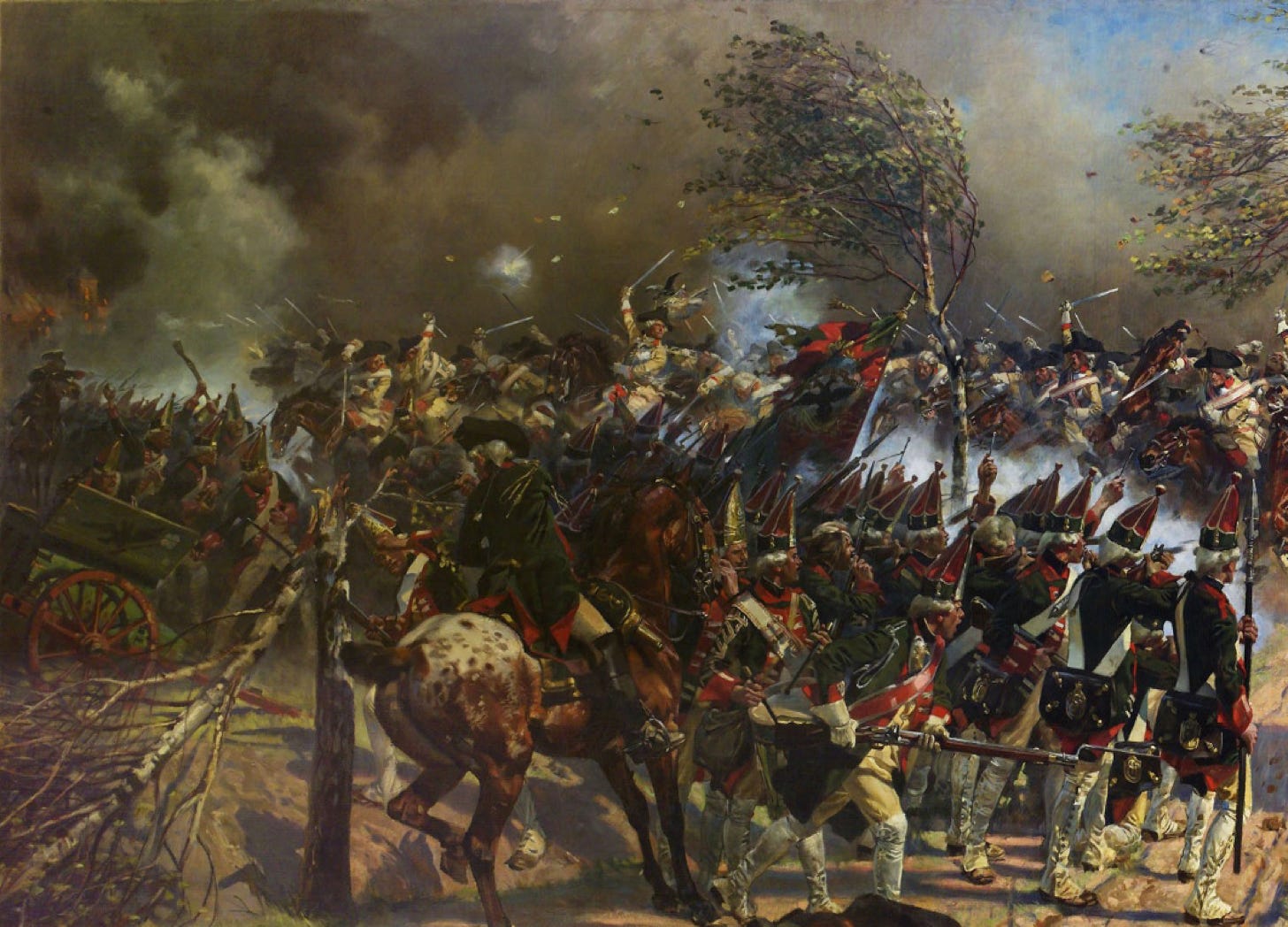
In 1810, ten Prussian infantrymen used eight different kinds of muskets to fire several thousand musket balls at a series of wooden targets set up in a weed-covered field. The targets, which measured six feet (in height) by one hundred feet (in width), stood, at intervals of a hundred paces, that distances that began at one hundred paces and ended at six hundred paces. (Each of the paces in question equalled three-quarters of a meter, or, if you, like me, you prefer Freedom Units, two-and-a-half feet.)
The figures produced by this experiment tell us much about the muskets used during the Napoleonic Wars (and, to a lesser degree, the longer period, from 1680 or so to the middle of the nineteenth century, in which most of the soldiers who fought on foot carried smoothbore, muzzle-loading shoulder arms. To be more specific, they enable us understand something about the commonalities of weapons of that sort and, at the same time, discover differences that distinguish some members of that class from others.
Keep reading with a 7-day free trial
Subscribe to The Tactical Notebook to keep reading this post and get 7 days of free access to the full post archives.




